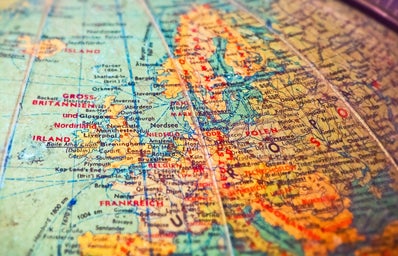In a time when the words ‘confinement’ and ‘isolation’ are on the agenda, we come to think more closely about the spaces we are enclosed in. Our room, our apartment, our city, our country. Imagine a set of Russian dolls – human beings embody the tiniest of components and disappear into their small worlds.
Defining borders means creating identities and fixing a space in time to which we belong. In his Eloge des frontières, Debray defines borders as entities guaranteeing the diversity of the world, with the aim of sharing and not excluding.
In the past, governments aspired to preserve their population, because leaving a country meant losing economic wealth and workforce. It was easier to enter other countries, to export and enlarge one’s business or to escape from poverty and look for a better future. The situation today has changed dramatically. Borders are often barriers, regarded as ways to keep stability in a country and migration is often associated with transgression. Just think of the 4-km border between India and Bangladesh, or the infamous border between North Korea and South Korea and many more.
At the same time, now more than ever – or at least before Covid-19 – mobility is the indisputable right to move from one country to another freely. Since the early days of humanity, people have been on the move, as if looking for something in a never-ending circle – a better job, a better climate, a better life. This trend has never ceased to stop, in 2019 international migrants comprise 3.5 per cent of the global population.
Article 13 of the Universal Declaration of Human Rights states that:
(1) Everyone has the right to freedom of movement and residence within the borders of each state.
(2) Everyone has the right to leave any country, including their own, and to return to their country.
Consequently, borders are made to be crossed. Migration is considered as a rite of passage in many African countries, in order to ‘ensure social becoming, by confronting risk and the unfamiliar’ (Adventure Capital, Kleinman). When borders are closed, mobility and progress are stuck, leading to dangerous consequences, such as illegal immigration. This latter is one of the greatest issues of our time, which counts innumerable deaths. Only in 2016, the number of recorded deaths of migrants in the Mediterranean Sea was 5143. Shocking numbers are not just figures, but individuals who often cross the borders of their country due to life-threatening and/or politically unstable situations. The other side of the border, or the other shore of the Mediterranean Sea, becomes the dream to chase through any possible means.
Unfortunately, the journeys migrants undertake are inhuman, with poor sanitary and safety conditions. Moreover, they often arrive in little port cities that are unable to receive them in safe and appropriate spaces. This is the case of the little Sicilian island Lampedusa, one of the main reception ports in Italy, which struggles to offer shelter to the numerous refugees. Moreover, the political climate of the host country can sometimes be hostile to welcoming them. The issue about closing or opening the borders constitutes one of the most discussed topics in political debates or on social networks.
Therefore, how do we define a border? They can be visible and invisible; they can divide and unite at the same time, perfectly mirroring an ever-changing modernity, or liquid modernity, in Baumann’s words. The modern ‘liquid’ person flows through life like a tourist, changing places, jobs, values and much more. The world is increasingly culturally diverse, with cosmopolitan cities like London, Moscow or Istanbul, which count millions of coexisting communities and ethnicities.
Even though borders allocate us to a country that inevitably shapes our lives, we should never stop crossing them.



